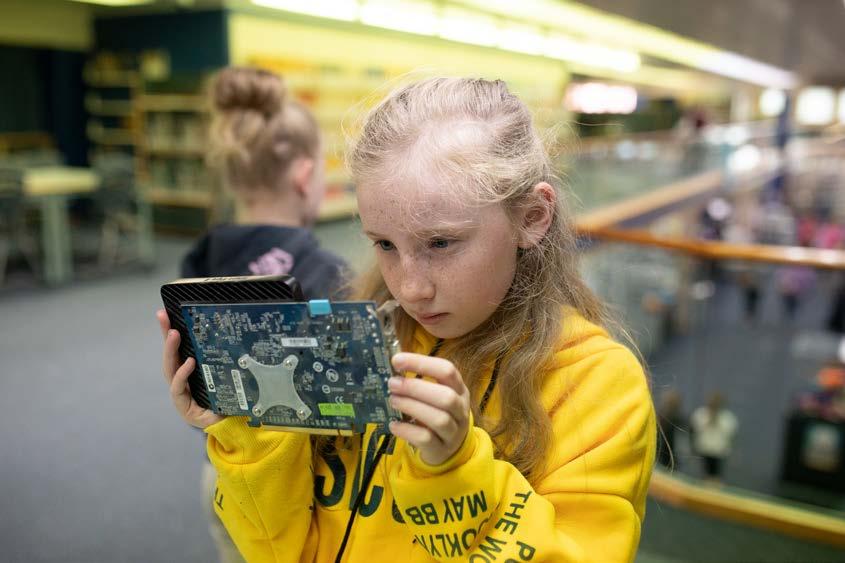
6 minute read
Contents SECTION A 2 Mayor’s Message 2 Background
Background
Hastings District comprises 81,537 people at the 2018 census, of whom 71.8% identify as European; 27.3% identify as Māori; 8% as Pasifika and 5.6% as Asian. The population includes a higher than national average proportion of both older and younger people. The District is 5,200km2 and is a large hinterland with small rural communities, with the main urban centres being Hastings, Havelock North and Flaxmere. Hastings District’s education statistics show that the level of educational achievement in Hastings District is lower than nationally. Similarly, employment stats show that fewer people than the national average are in employment. Of those that are in employment, a higher percentage of people in the Hastings District are in semi-skilled or unskilled occupations than the rest of New Zealand and this is reflected in income levels in the Hastings District, which are on average below those across the rest of the country. Supporting young people into education or employment is a key goal in Hastings District Council’s Great Communities Strategy1. NEET2 figures for young people in the District are high and significant central and local government resources and energy are being expended to address this. Latest census data3 show a range of outcomes on relevant key indicators for Hawke’s Bay. Home ownership in Hastings
Advertisement
District is slightly below the rest of New Zealand. At the same time, access to telecommunications show that 83.4% people in Hastings District have access to the internet (below the national average) and 91% have access to a mobile phone (also below the national average), although 68.8% have access to a landline (higher than the national average). A slightly higher proportion of people have no access to any telecommunication systems. This illustrates that the Hastings District faces several challenges in achieving best possible social outcomes, impacting on the social support and services that need to be provided by central and local government agencies. The Government’s digital strategy aims to modernise and transform public services, acknowledging that technology touches the way we work, stay in touch with family and friends, move around, shop and learn4. The shift towards technologybased solutions to deliver what once was provided in hard copy, or what was delivered face-to-face from bricks and mortar premises impacts vulnerable communities however. Everyday examples include banking, shopping, communication, news delivery, use of government services for everything from assistance applications and payments, passports and immigration applications, tax returns and vehicle registrations, to rates and building consents. The employment supply chain is also now predominantly in the digital space. The risk for some people is that without the skills, confidence or access to technology that they will be left on the wrong side of New Zealand’s digital divide, particularly where one or more factors impacting vulnerability are in play. Affordability is a barrier for many, particularly for households on fixed incomes.

8% Pasifika
5.6% Asian
1 Hastings District Council. (2021). Great Communities Strategy [Draft]. 2 Not in Employment or in Education 3 Data from www.stats.govt.nz 4 New Zealand Government. (2020). Strategy for a Digital Public Service. www.digital.govt.nz

About Hastings District Libraries
Hastings District Libraries is one library service delivered from three sites at Hastings, Havelock North and Flaxmere, as well as online services from www.hastingslibraries.co.nz With over 580,000 visitors, over 75,000 visits to the website and a steady social media following each year, Libraries are Council’s most-visited community facilities. Library services provided include: • access to informational and recreational content in a range of formats from print to digital • spaces for the community to relax, meet, study, or even read • access to computing resources that enable people to learn, stay in touch, or be connected • programmes, events or activities targeted at all ages and interests and delivered onsite, offsite or virtually • service and support to customers in their use of library services and with their information needs • outreach to community groups, organisations and individuals who may not be able to access library services physically
In line with national and international trends, use of physical collections is slowly declining over time, while use of technology, facilities and participation in programmes remains strong.
Globally, use of public libraries has shifted from being exclusively about catering for people’s reading needs to catering for a diverse range of needs from a need for information, connection and support in a world that is increasingly digital. Public libraries have a significant ongoing role in supporting those who may be less able to navigate a changing and increasingly digital world and who are therefore at risk of being socially, economically, politically and culturally disengaged, disconnected and disadvantaged.

SECTOR CONNECTIONS
In terms of sector collaboration, HD Libraries is an active member of the Kōtui Consortium, a shared service partnership between local and central government to deliver shared library infrastructure, products and services, as well as two other regional collaborations relating to purchase of content in both print and digital formats. As an active member of and participant in regional and national sector groups, several HDL staff represent the public library sector on national boards and councils, working both across the sector and with local and central government organisations. Public libraries are connected internationally through membership of organisations such as LIANZA (representing the breadth of NZ’s library sector) and PLNZ (Public Libraries of NZ) which are both actively connected with international counterparts. HD Libraries holds membership of both organisations and a number of staff are also active in these organisations and networks.

The changing landscape for libraries
The political landscape has changed significantly since the last Libraries’ Strategic Plan was written, with New Zealand now led by a government with a strong social agenda. This has translated to a stronger emphasis on social development investment and initiatives, largely funded by central government. Some libraries have struggled to leverage this policy shift as the contribution that libraries make to building social capital is not always well understood by decision makers. New Zealand has also had to respond to several natural hazard challenges in the last decade. The Canterbury earthquakes of 2010-11 continue to have far-reaching impacts for the building code, earthquake strengthening and building design, which has had implications for every local authority. Another recent significant event was the Christchurch Mosque shootings, which has highlighted the contrast between inclusion and inclusivity, diversity and acceptance, against a wider international context of more politically conservative governments. At the local level Hastings District Council has been affected by diverse but far-reaching impacts. The 2016 contamination of the Havelock North water supply had a very significant impact on Council expenditure, focus and processes. Similarly, increased gang activity and other antisocial behaviour has impacted council resourcing. A series of behavioural incidents in Council facilities in 2018 led to increased expenditure and emphasis on safety and security of Council facilities, their staff and their customers, although the recommendations of the Security review have yet to be fully implemented. From 2020, the COVID-19 pandemic has directly impacted every country on the planet socially, economically, environmentally and culturally. Both short-and long-term consequences of the pandemic have affected expenditure priorities, public health considerations and service delivery models. Like others, Hastings District Council has been forced to reconsider expenditure priorities and service delivery models across the organisation.





